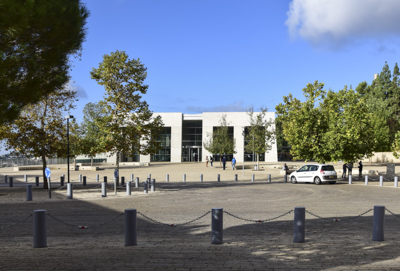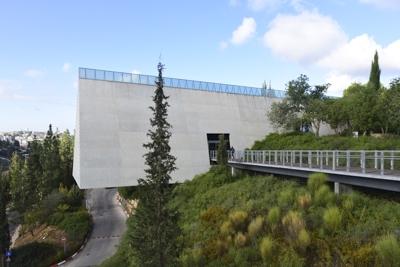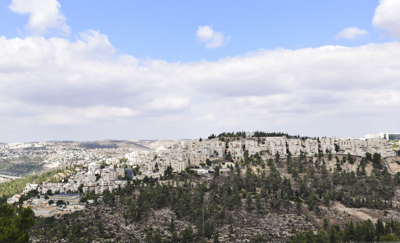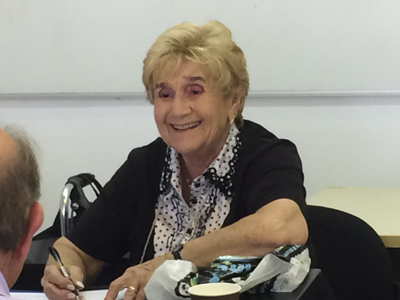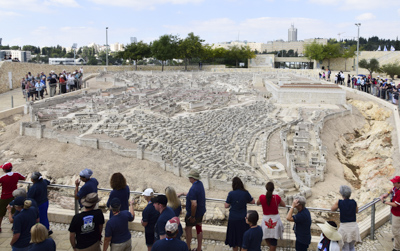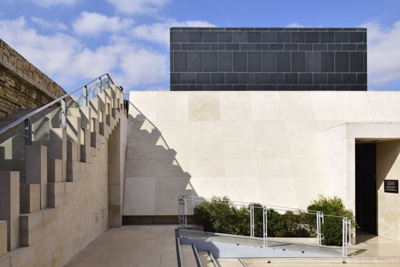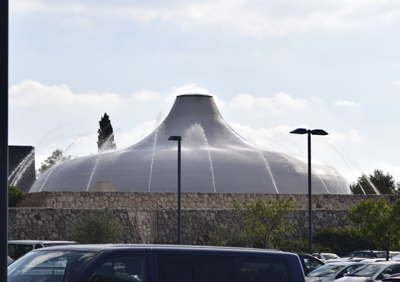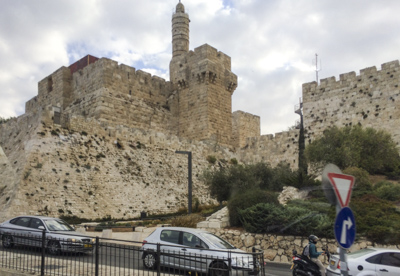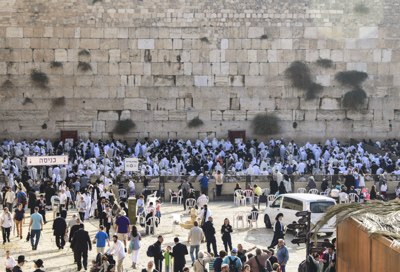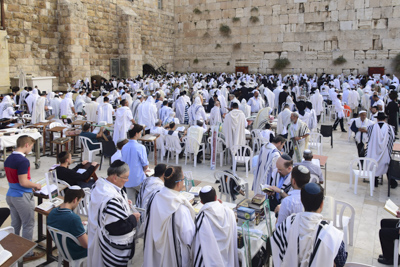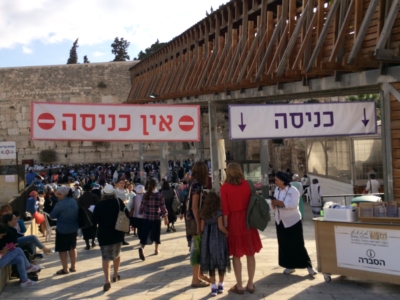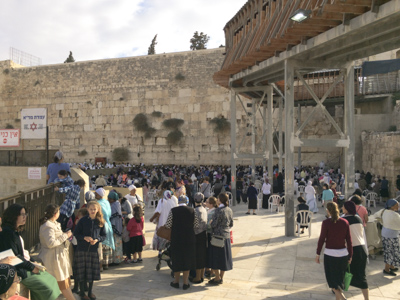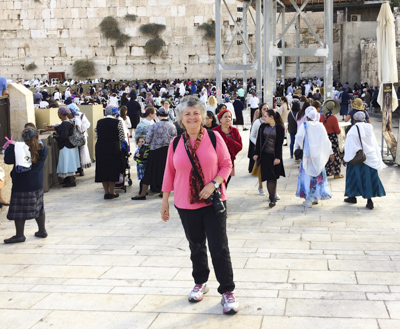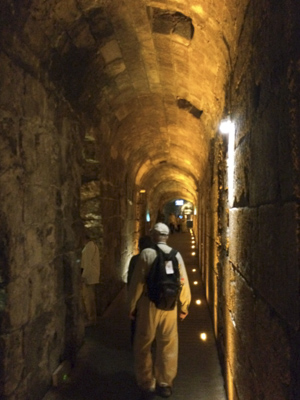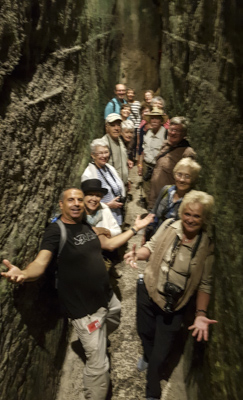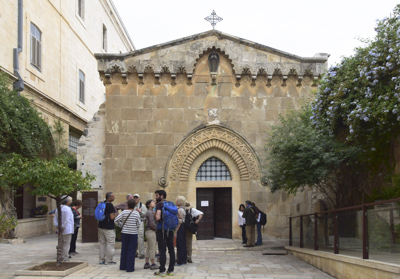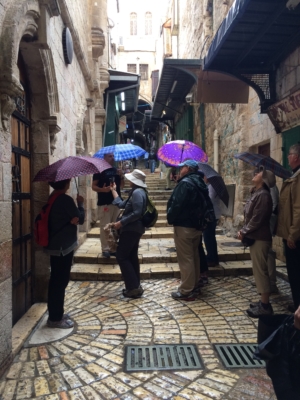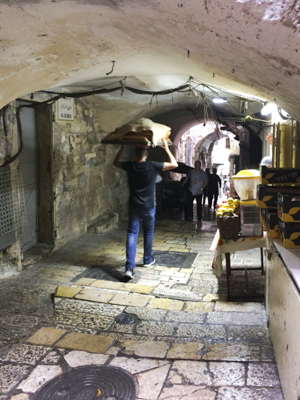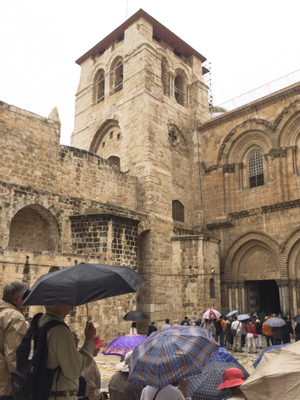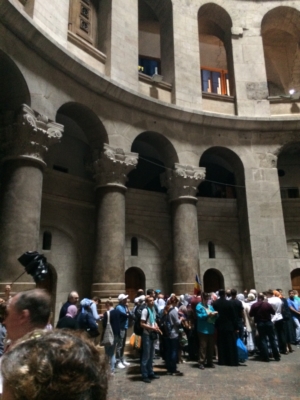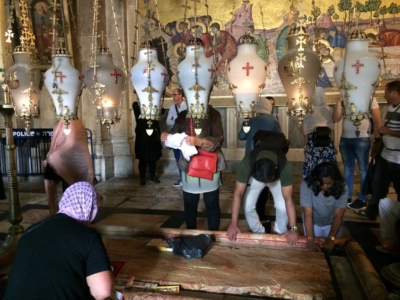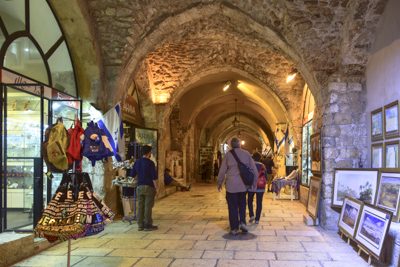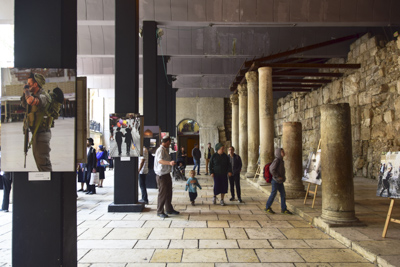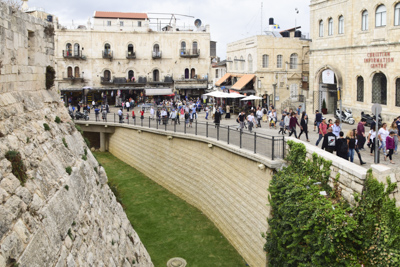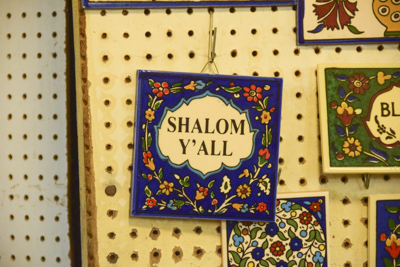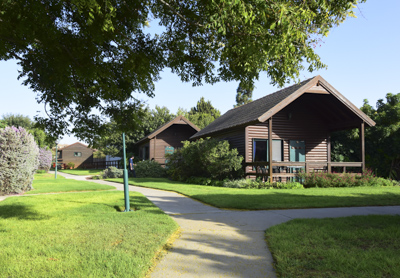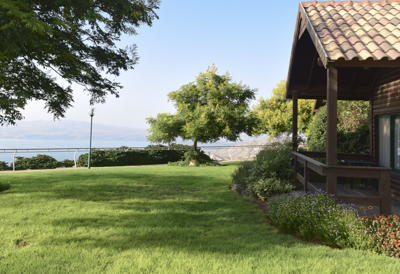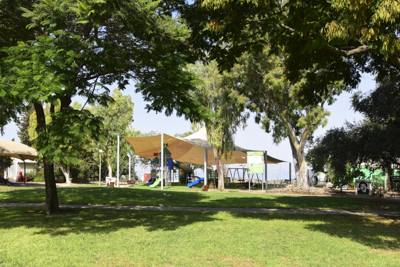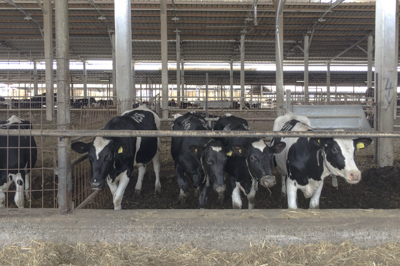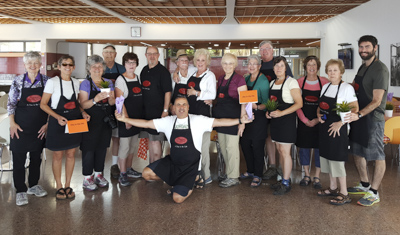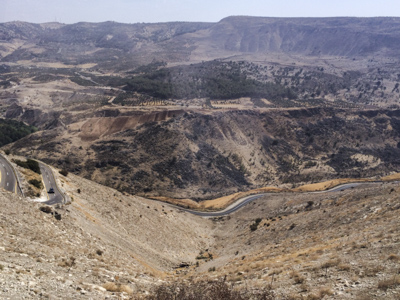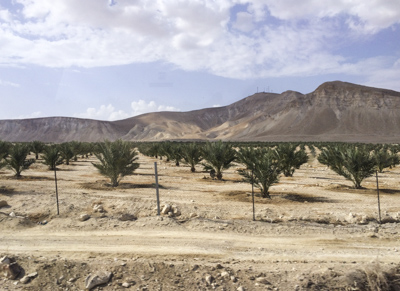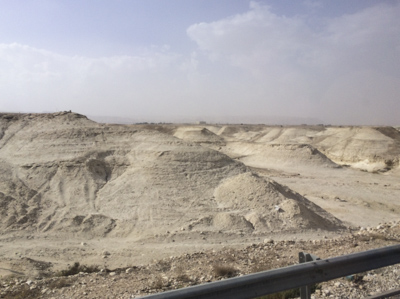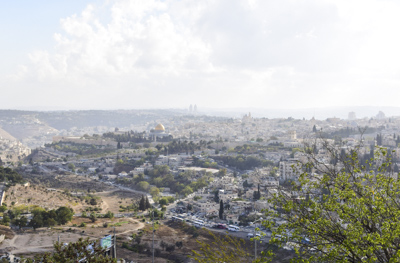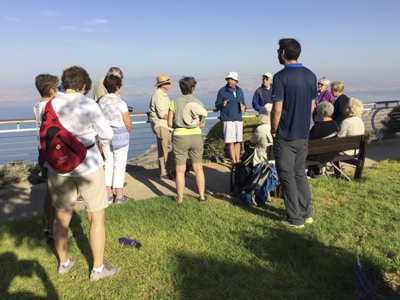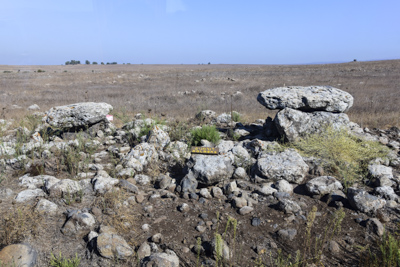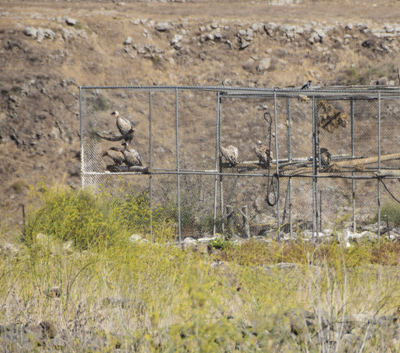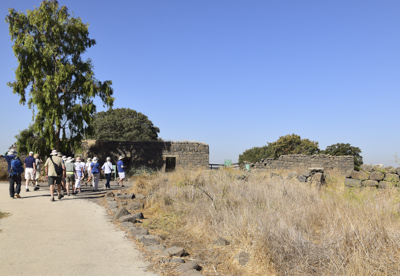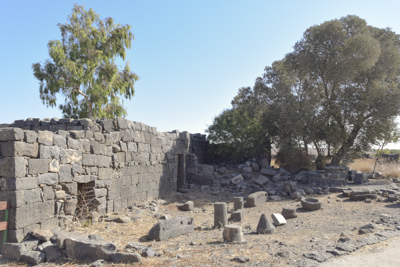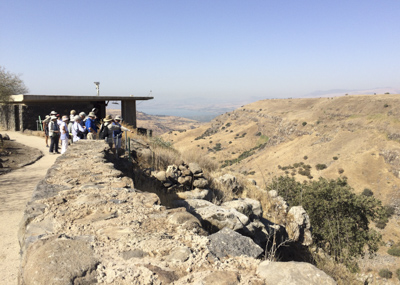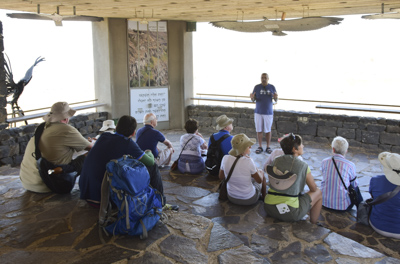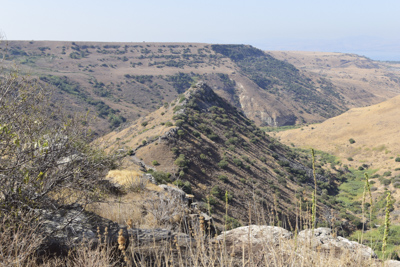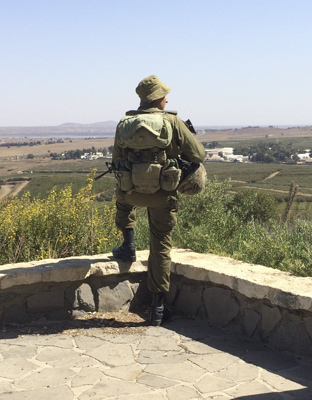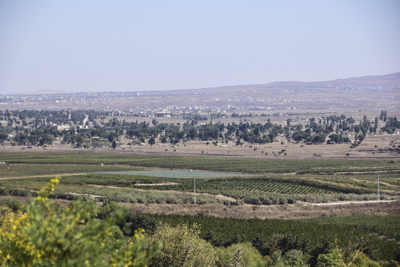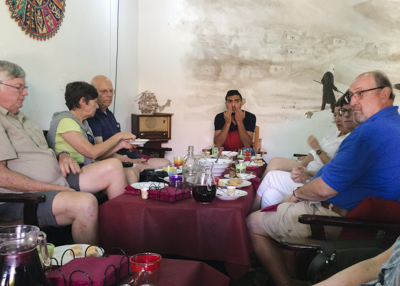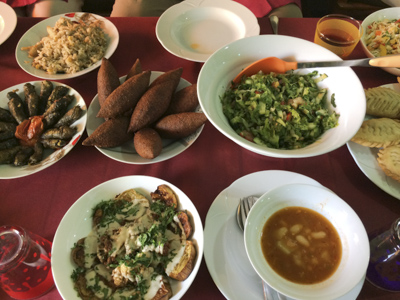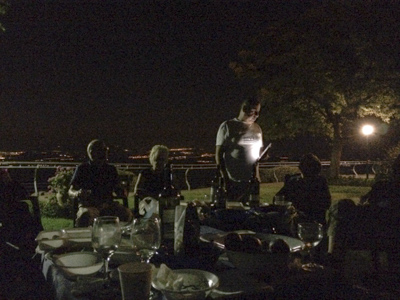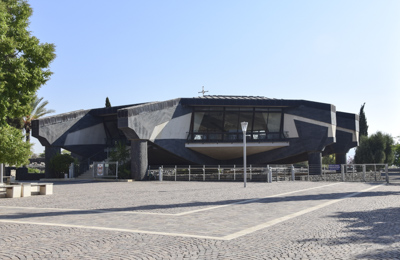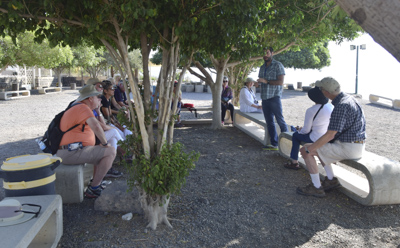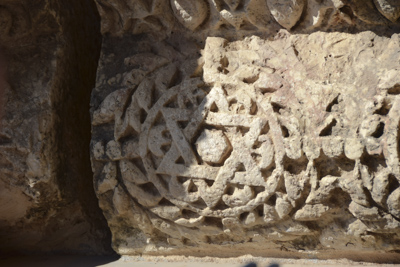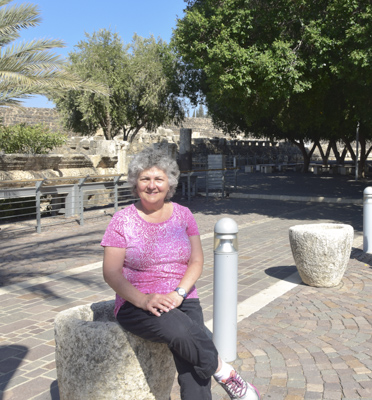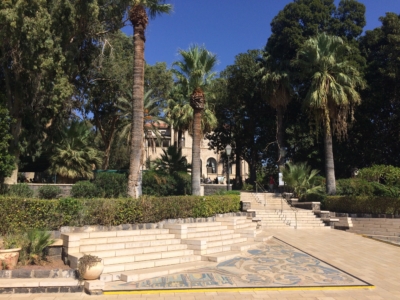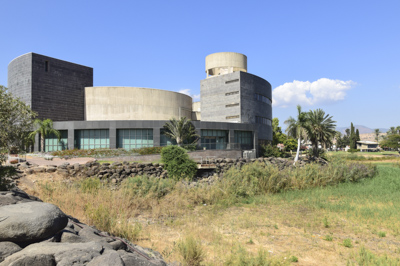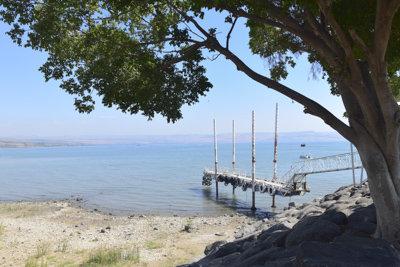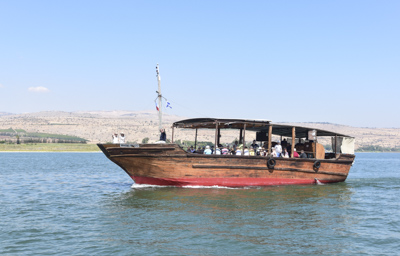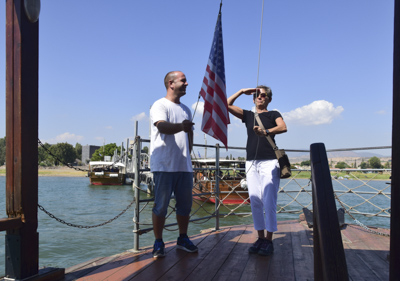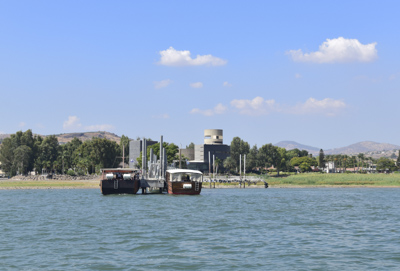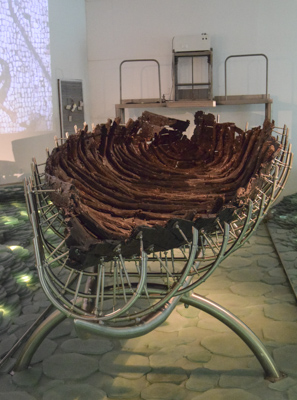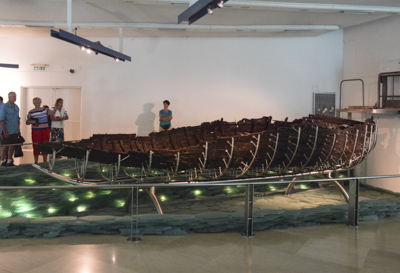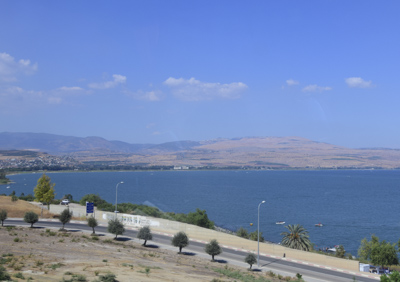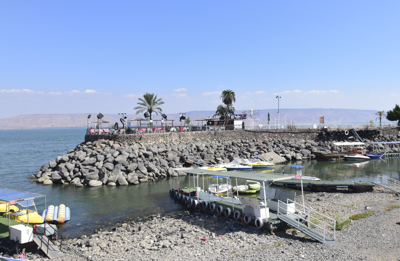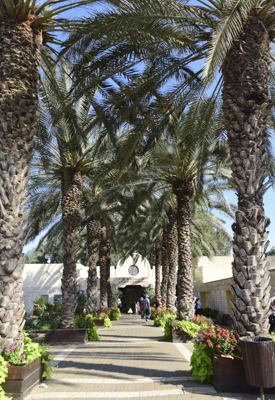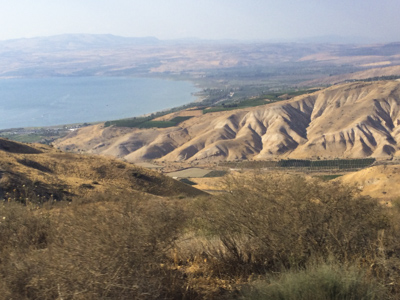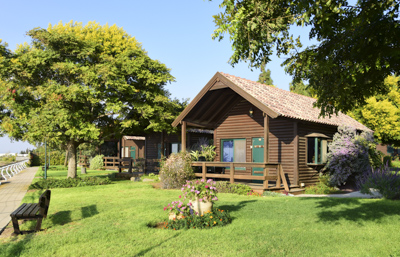Tuesday – October 10, 2017
I negotiated with a desk clerk at the Dan Boutique Hotel to have my laundry done at a reduced rate, so I was happy. Then we went out into another brilliant sunny day; 19 degrees C and breezy. Our destination was Yad Vashem – The World Holocaust Remembrance Center.
“I will put my breath into you and you shall live again, and I will set you upon your own soil….” Ezekiel 37:14 Carved in stone, the statement greeted us as we walked into the reception building.
The Holocaust Museum was designed in the shape of a triangular prism and built into the top of a hill known as the Mount of Remembrance. Yad Vashem is Israel’s memorial to the victims of the Holocaust. The museum was dedicated in 2005 and consists of a long corridor connected to 10 exhibition halls, each describing a different chapter of the Holocaust in chronological order.
Photography was not permitted inside the museum. One million visitors go the Yad Vashem annually to learn about the deplorable events of the Holocaust and remember people who died under tragic and horrendous circumstances. The exhibits in the museum are excellent with videos, memorabilia, artifacts, and maps. Walking slowly through the chronological events was extremely sad for me.
After going through the museum, we met with a survivor of the Holocaust. She had just published her memoirs and related the story about her childhood in Poland, losing her parents and siblings, and finally being rescued from a concentration camp when she was ten years old. She had lived in Denmark before moving to the United States. She eventually married and had four children, twelve grandchildren, and now has 22 great grandchildren. She is a true survivor!
Afterwards, we drove to The Israel Museum which is a huge complex of art galleries and archaeology museums. Our first stop was the Model of Jerusalem during the Second Temple Period. This is a scale model of the city prior to its destruction by the Romans in 66AD.
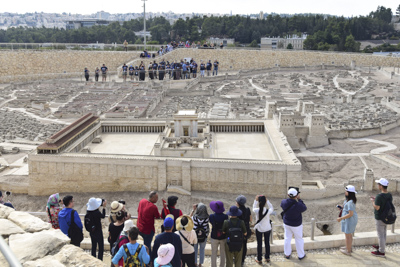
It was a fantastic model of Jerusalem, when the ancient city was more than twice the size of the Old City today. After this time period, the Great Revolt against the Romans took place and Jerusalem was destroyed as well as the Temple.
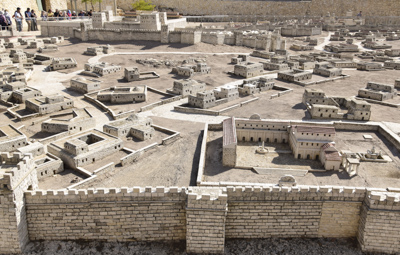
The model was completed in 1966 and relocated to the museum in 2006. According to a plaque, the model is continuously updated as more archeological excavations are uncovered and improve scientists’ understanding of ancient Jerusalem.
Entrance to The Shrine of the Book:
Then we crossed the street and went to the Shrine of the Book where select pages of the Dead Sea Scrolls were on display. These are the oldest biblical manuscripts in the world, dating from 3rd century BC to the 1st century AD. 900 scrolls were discovered in 1947 in eleven caves near Wadi Qumran, 28 miles east of Jerusalem near the Dead Sea. This was one of the most important archeological finds in Israel.
The Shrine of the Book building, opened in 1965, and was designed to resemble a pot in which the scrolls were found. Two-thirds of the building is below ground level. The scrolls are displayed on a rotating basis. Also on display was the Aleppo Codex, from the 10th century, believed to be the oldest Bible codex in Hebrew.
Later in the evening, our group went to the home of an Ultra-Orthodox Jewish family for dinner. We met the young couple, their two year old son, their rabbi, and other friends and family members. They spoke openly about their faith and their roles in the family, their community, and in Israel today.
It had been another amazing day in Israel!
